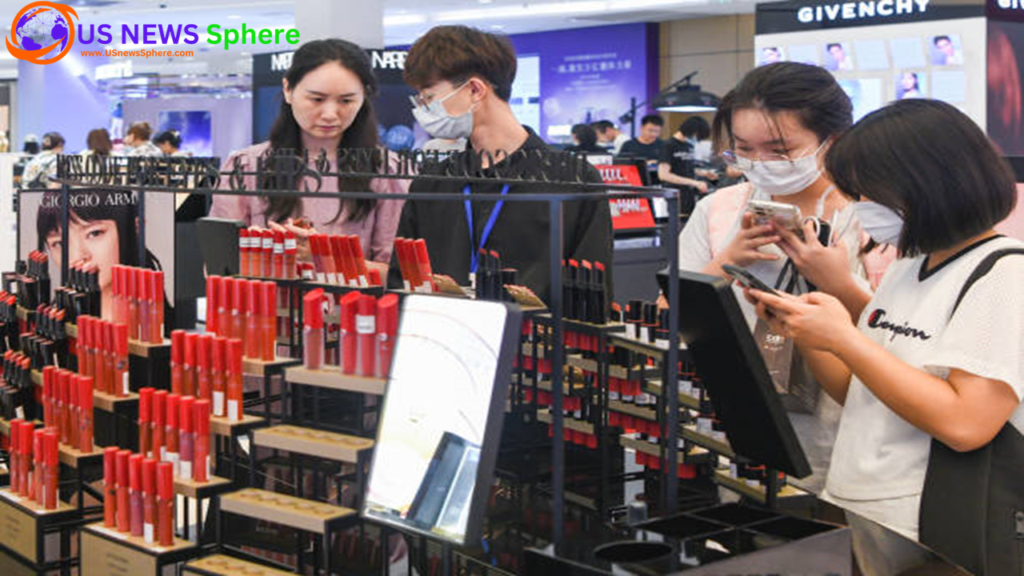The Evolving Landscape of Cosmetics in China
In the ever-changing world of beauty and self-care, cosmetics have emerged as a powerful force shaping consumer preferences and market dynamics. Particularly in China, the cosmetics industry is undergoing a remarkable transformation, influenced by regulatory shifts, cultural nuances, and global trade tensions. Dive into this comprehensive analysis to understand the challenges and opportunities that lie ahead for international and domestic brands in China’s booming cosmetic sector.
Table of Contents

[cnn.com]
Navigating China’s Cosmetics Surge: A Deep Dive into the Opportunities and Challenges for Global Brands
The Post-Pandemic Cosmetic Renaissance in China:
In the aftermath of the pandemic, there’s been a noticeable shift in Chinese consumer behavior. Instead of investing in high-value assets like properties, there’s a growing trend towards personal indulgence. Beauty and self-care products, including lipsticks, perfumes, and moisturizers, are witnessing unprecedented demand, marking a new era in China’s cosmetic landscape.
The Regulatory Maze: Foreign Brands’ Struggle with China’s Stringent Policies:
While China’s local cosmetic industry flourishes, international brands from powerhouse nations like France, Japan, South Korea, and the U.S. are navigating a complex web of regulations. These policies, introduced during the pandemic, demand comprehensive transparency on product ingredients, their exact quantities, and intricate details about suppliers, sparking concerns about potential intellectual property breaches and product imitation.
The Ethical Quandary of Animal Testing:
China’s insistence on animal testing for a range of products has become a significant point of contention. This mandate, which many global cosmetic giants have long abandoned in favor of ethical practices, poses both moral and operational challenges. The requirement not only affects brand image but also limits market entry for those committed to cruelty-free testing.

Diplomatic Interventions: The Global Push for Regulatory Reforms:
The economic implications of the cosmetic trade have not gone unnoticed on the international stage. Spearheaded by France and joined by nations like the U.S. and Japan, there’s a concerted effort to persuade China to revisit and potentially relax these stringent regulations. High-profile diplomatic engagements, trade discussions, and negotiations are in play, emphasizing the mutual benefits of a more open cosmetic trade.
The Rise of Homegrown Brands: A Shift in Consumer Loyalty:
Recent market data paints a telling picture: while overall cosmetic sales in China soar, there’s a decline in imports. This trend underscores the growing dominance and acceptance of domestic brands. Companies like Proya Cosmetics are riding this wave, reporting impressive sales figures and capturing a significant market share.
Projecting the Future: China’s Central Role in the Global Cosmetic Industry:
Challenges notwithstanding, China’s allure as a cosmetic market powerhouse remains undiminished. Projections suggest that by 2027, China will account for a staggering one-sixth of global beauty retail sales. For foreign brands, the path forward will involve adeptly maneuvering regulatory challenges while tapping into the burgeoning demand.
Wrapping Up: The Evolving Landscape of China’s Cosmetic Market:
The dynamics of China’s cosmetic market present a blend of immense potential and intricate challenges. As foreign brands strategize their approach, diplomatic interventions, industry innovations, and a keen understanding of consumer preferences will shape the future of this vibrant market.
Charting the Future of Cosmetics in China
As we delve deep into the intricacies of China’s cosmetic landscape, it’s evident that the road ahead is both promising and challenging. The meteoric rise in demand for beauty and self-care products post-pandemic underscores China’s evolving consumer mindset and its potential to reshape global cosmetic trends.
However, the journey for international brands is not without its hurdles. Navigating the regulatory maze, championing ethical testing practices, and understanding the shifting loyalties towards homegrown brands are pivotal. Yet, with diplomatic dialogues in progress and the undeniable economic allure of the Chinese market, there’s optimism in the air.
In the grand tapestry of global trade, China’s cosmetic sector stands out as a vibrant and dynamic segment. For brands, stakeholders, and consumers alike, the coming years will be a period of transformation, innovation, and growth. As we watch this space, one thing is certain: the world of cosmetics in China is set for a fascinating evolution, and its ripples will be felt across the globe.





